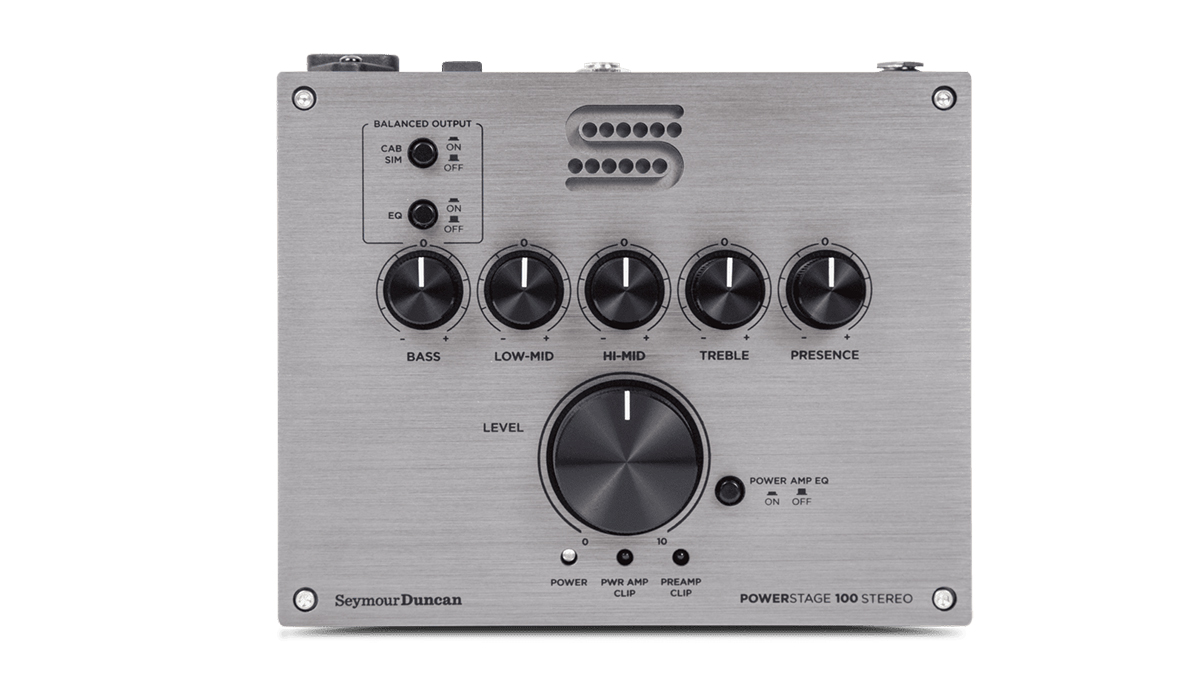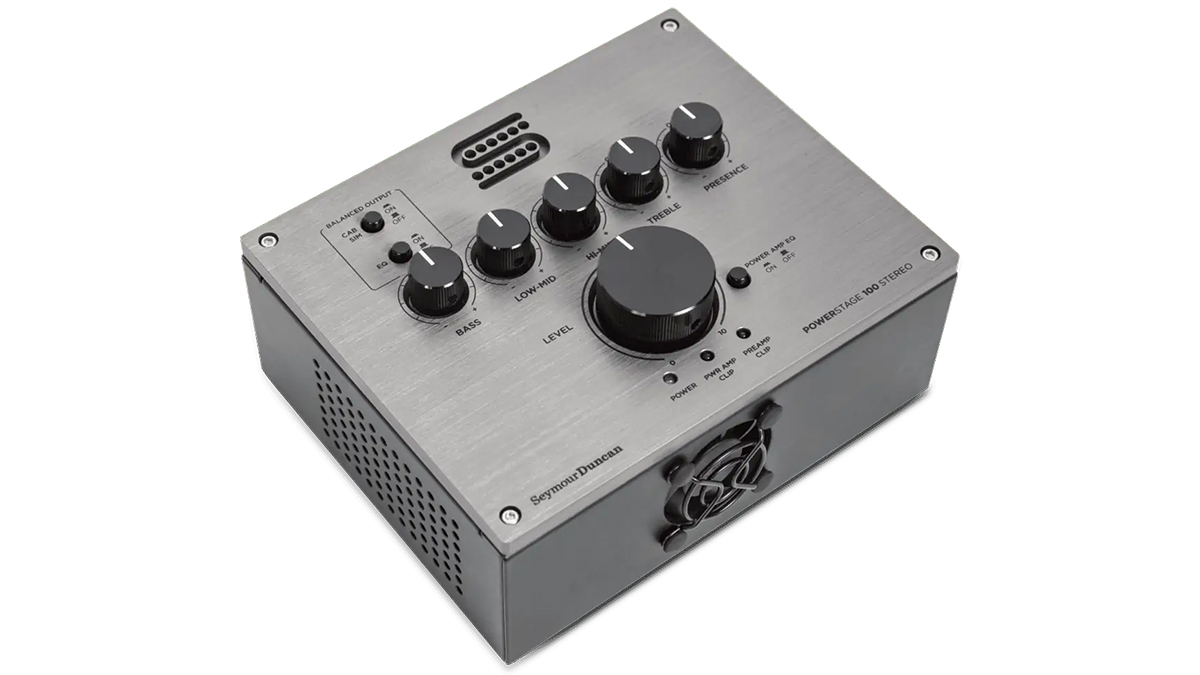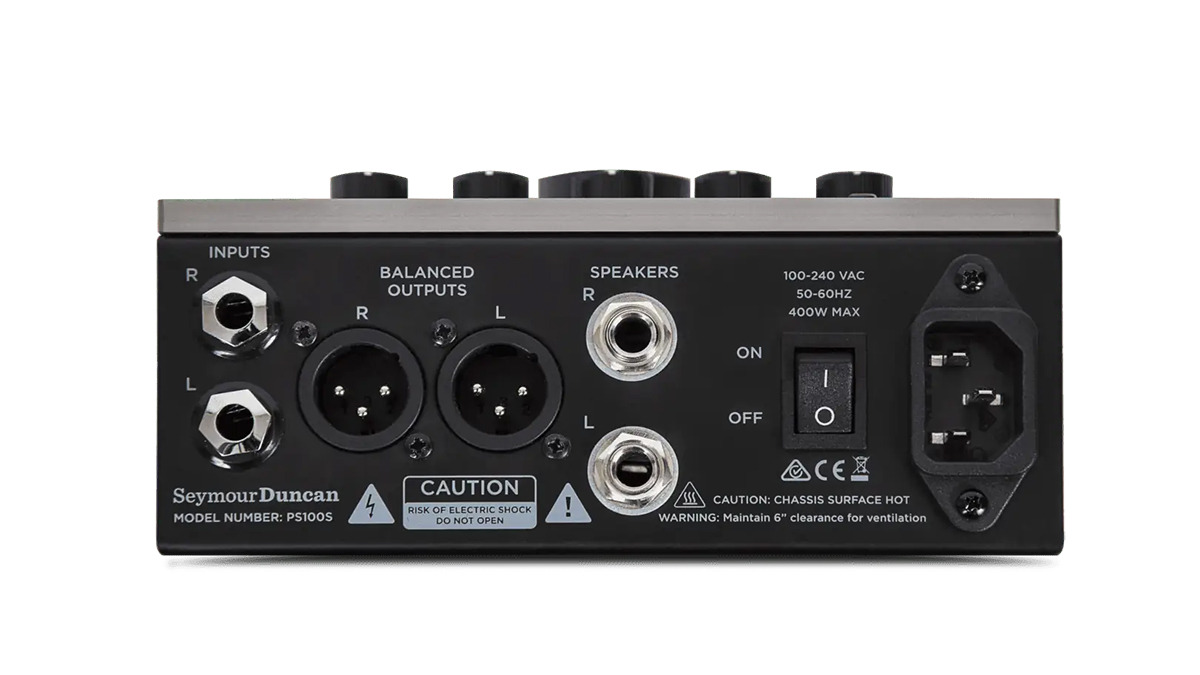
Seymour Duncan has debuted the latest entry into its PowerStage series: the PowerStage 100 Stereo power amp pedal.
As is the case with the rest of the PowerStage catalog, the PS 100 Stereo is specifically targeted at players whose rigs are headed up by amp modelers or multi-effects.
In practice the PowerStage – or any power amp pedal, for that matter – transports a player’s sound straight from a modeler, multi-effects or preamp sim direct to on-stage cabinets without tampering with or coloring the tone.
The pedal itself joins its three PowerStage siblings – the PS 170, PS 200 and PS 700 – and while on paper it may seem to be the most humble unit of the lot thanks to the 100 watts of power it provides, it’s still certainly one of the most versatile, if not the most versatile.
That’s because, unlike most of its predecessors, the PS 100 supports stereo configuration, and comes equipped with right and left I/Os for authentically projecting the stereo sounds developed within a modeler or multi-effects to a larger audience.
It’s important to note that, while the PS 700 also offered discrete stereo ins and outs, its overly generous 700 watts would no doubt have alienated casual giggers who simply didn’t need that much power. Not only that, the PS 700 is a rack-style unit (used by the likes of Dave Mustaine) so it isn't exactly pedalboard friendly.
On the flipside, the more user-friendly and appropriately ‘board-sized PS 170 and PS 200 units were solely mono. It’s in this inbetween area where the PS 100 Stereo finds itself: a true power amp pedal that offers high-headroom class D amplification and, more importantly, stereo operation with 100 watts per channel.



Naturally, this opens up a huge range of tonal possibilities that aren’t available in previous PowerStage pedals. Here, the PS 100 allows for huge stereo spread delays and modulations, the blending of two separate sounds, versatile onstage sound arrangement and much more.
Otherwise remaining faithful to the PS 200 layout, the PS 100 Stereo features a five-band EQ for further tonal tweaks, comprising Bass, Low-Mid, Hi-Mid, Treble and Presence parameters. There’s also a larger Level controller, and a button to trigger the power amp EQ.
As for connectivity, the aforementioned stereo inputs and outputs are joined by instrument level balanced XLR outputs for sending the signal to a mixing board. Other appointments include a switchable analog Cab Sim on those latter outputs, as well as a button that applies the EQ to the balanced output.
Because of its stereo function, the PS 100 is more expensive than its pedal-sized peers – it costs $599, and is available now.
Visit Seymour Duncan to find out more.







